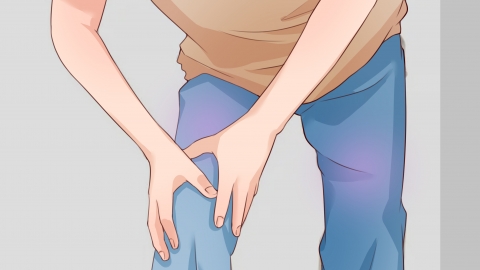What are the symptoms of leg vein thrombosis?
Generally, leg venous thrombosis may present symptoms such as mild leg pain, leg swelling, changes in skin color, increased skin temperature, and pulmonary embolism. If discomfort occurs, timely medical consultation is recommended. Detailed analysis is as follows:

1. Mild Leg Pain
Prolonged sitting or trauma can cause slow venous blood flow in the legs. Substances in the blood, such as platelets, tend to adhere and aggregate on the vessel walls, forming blood clots. Initially, the clots are small and can irritate the vessel walls, causing mild leg pain, often a dull ache or distension. The pain usually slightly worsens after activity and eases with rest, making it easy to overlook.
2. Leg Swelling
As the clot enlarges, it blocks the vein and hinders blood return. Blood accumulates in the leg veins, causing fluid leakage into surrounding tissues, leading to leg swelling. Typically, swelling starts at the ankle and gradually spreads upward. Pressing on the swollen area may leave an indentation. Swelling can affect normal leg movement, causing inconvenience in walking.
3. Changes in Skin Color
With continuous development of venous thrombosis and severe impairment of blood return, local tissue hypoxia occurs. Increased levels of reduced hemoglobin in the blood cause changes in skin color, which may appear dark red or purplish-blue. Changes in skin color not only affect appearance but also indicate serious problems with leg circulation.
4. Increased Skin Temperature
Due to vascular blockage by the clot, circulatory disturbance in the lower limbs causes accumulation of metabolic products, preventing timely dissipation of body heat. Metabolic activity in leg tissues becomes abnormally active, increasing heat production, which leads to elevated skin temperature. The affected area feels significantly warmer to the touch than unaffected areas.
5. Symptoms of Pulmonary Embolism
If a leg vein clot dislodges and travels through the bloodstream into the pulmonary artery, it causes pulmonary embolism. This is a very serious condition. Patients may suddenly experience difficulty breathing, chest pain, coughing up blood, fainting, and, in severe cases, life-threatening complications that pose significant risks to health and life.
It is recommended to avoid prolonged standing or sitting in daily life. After long periods of sitting, frequently stand up and move around. If leg venous thrombosis is suspected, prompt medical evaluation is necessary.











